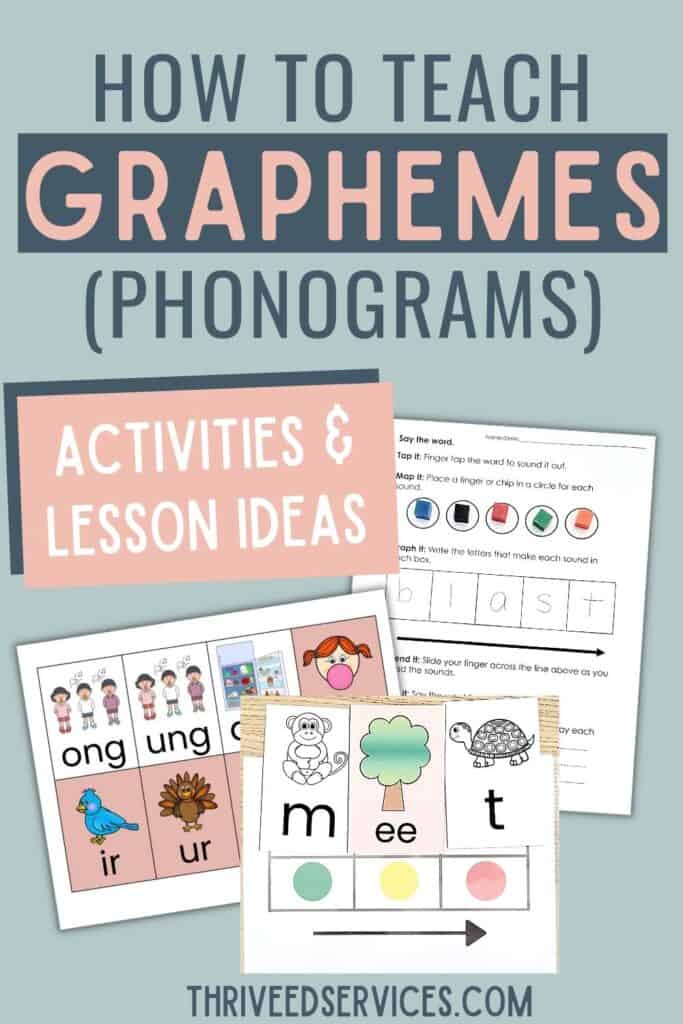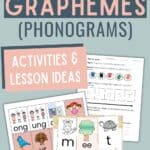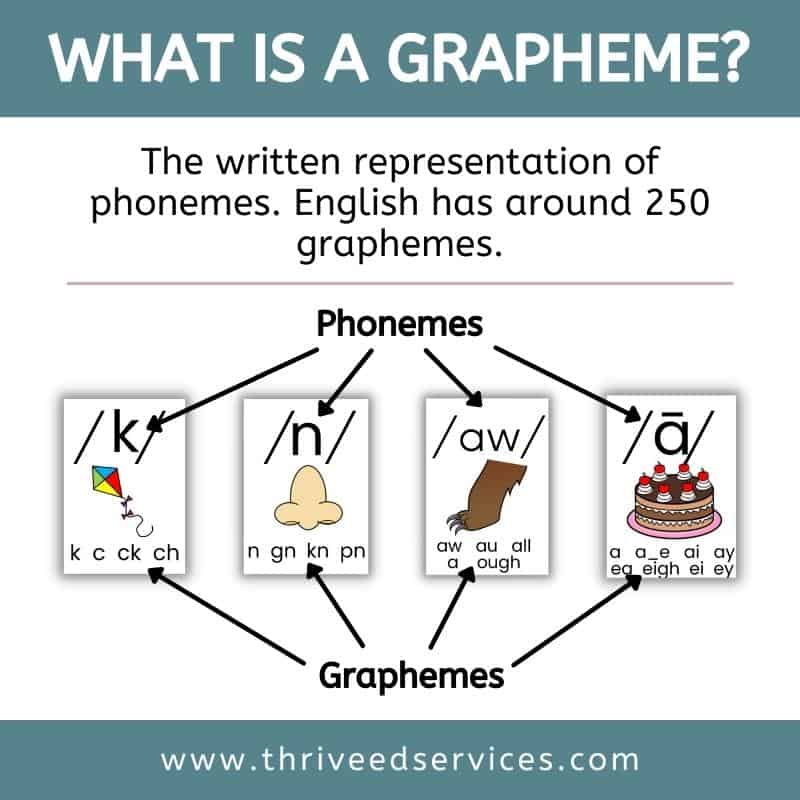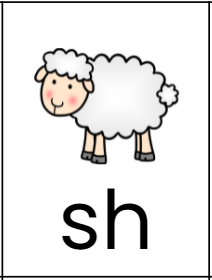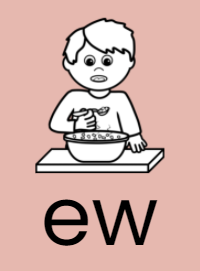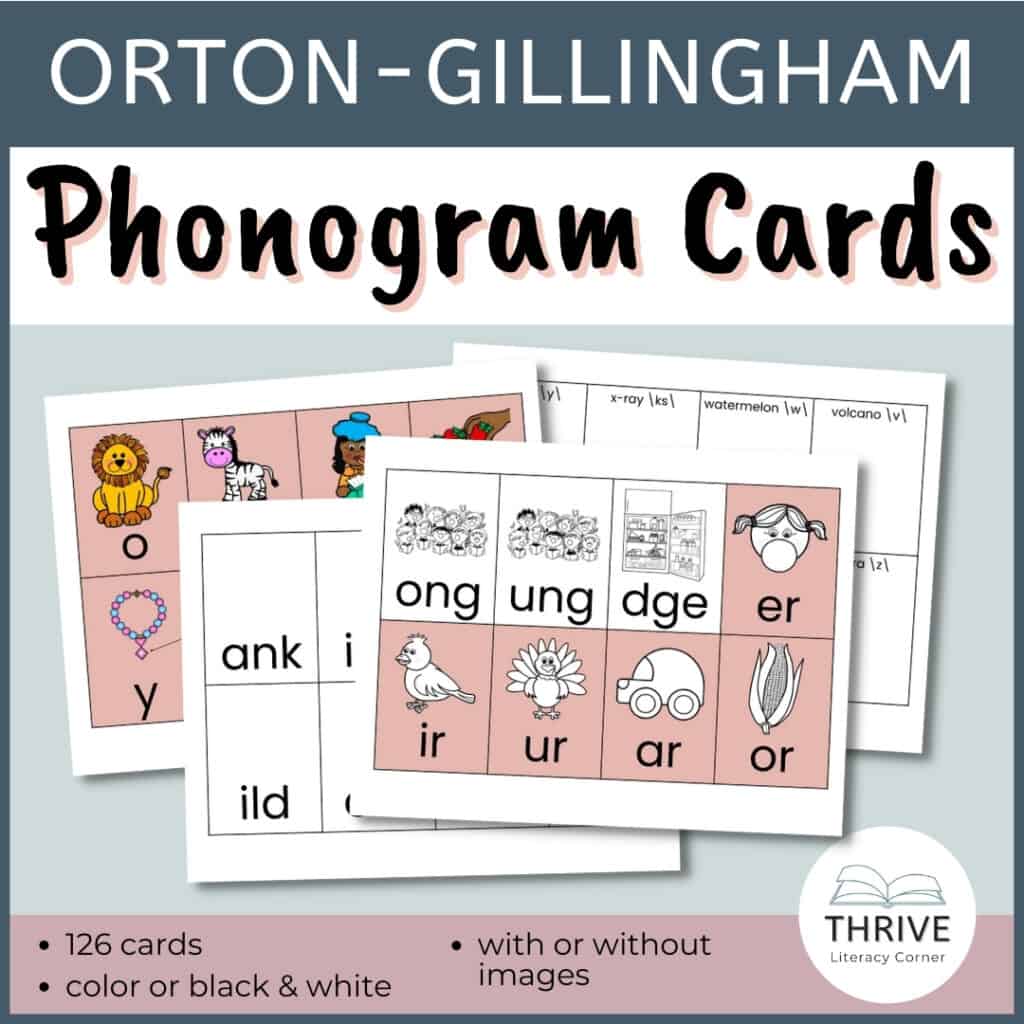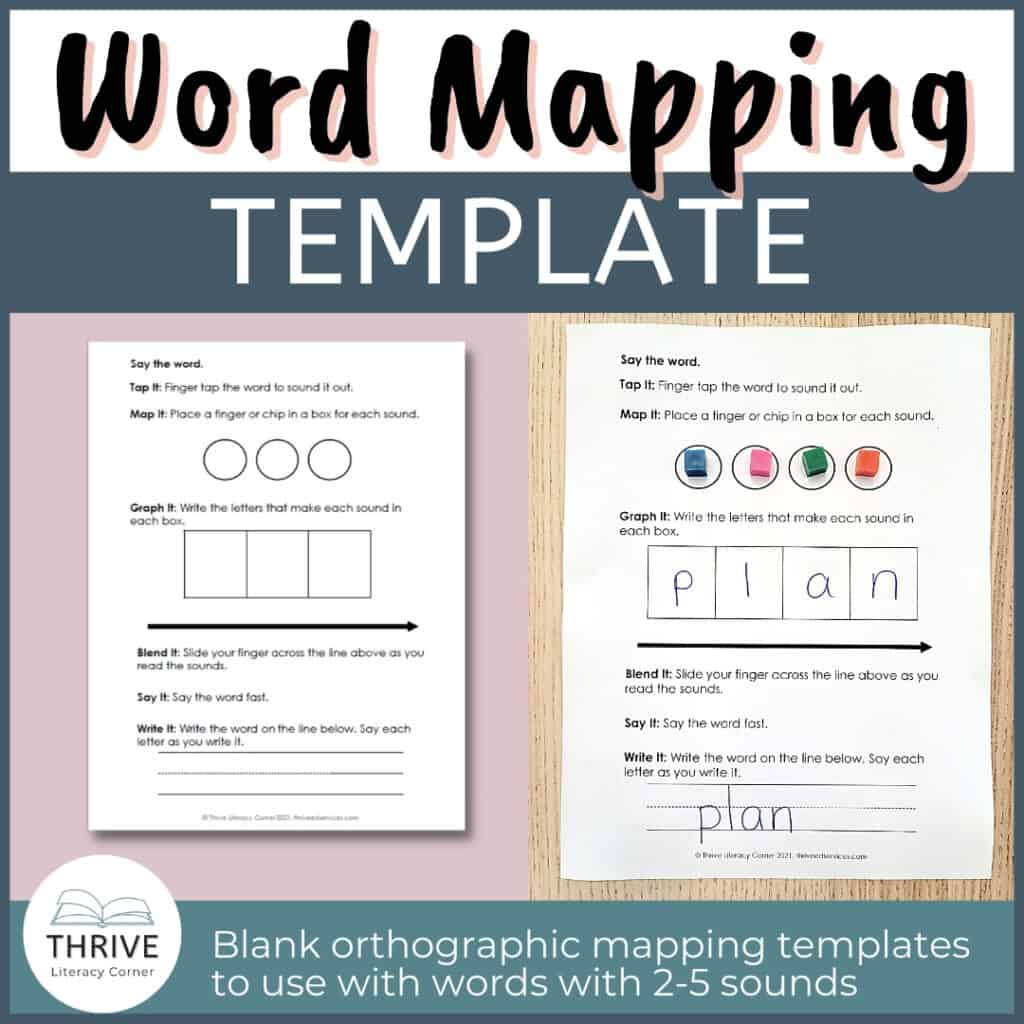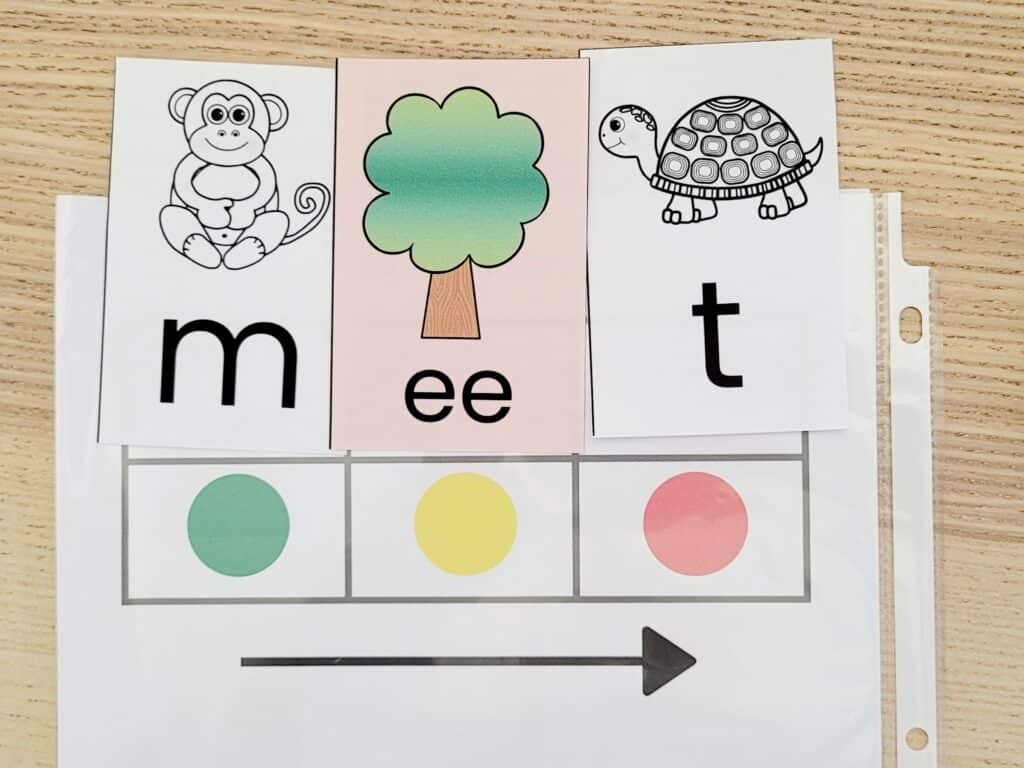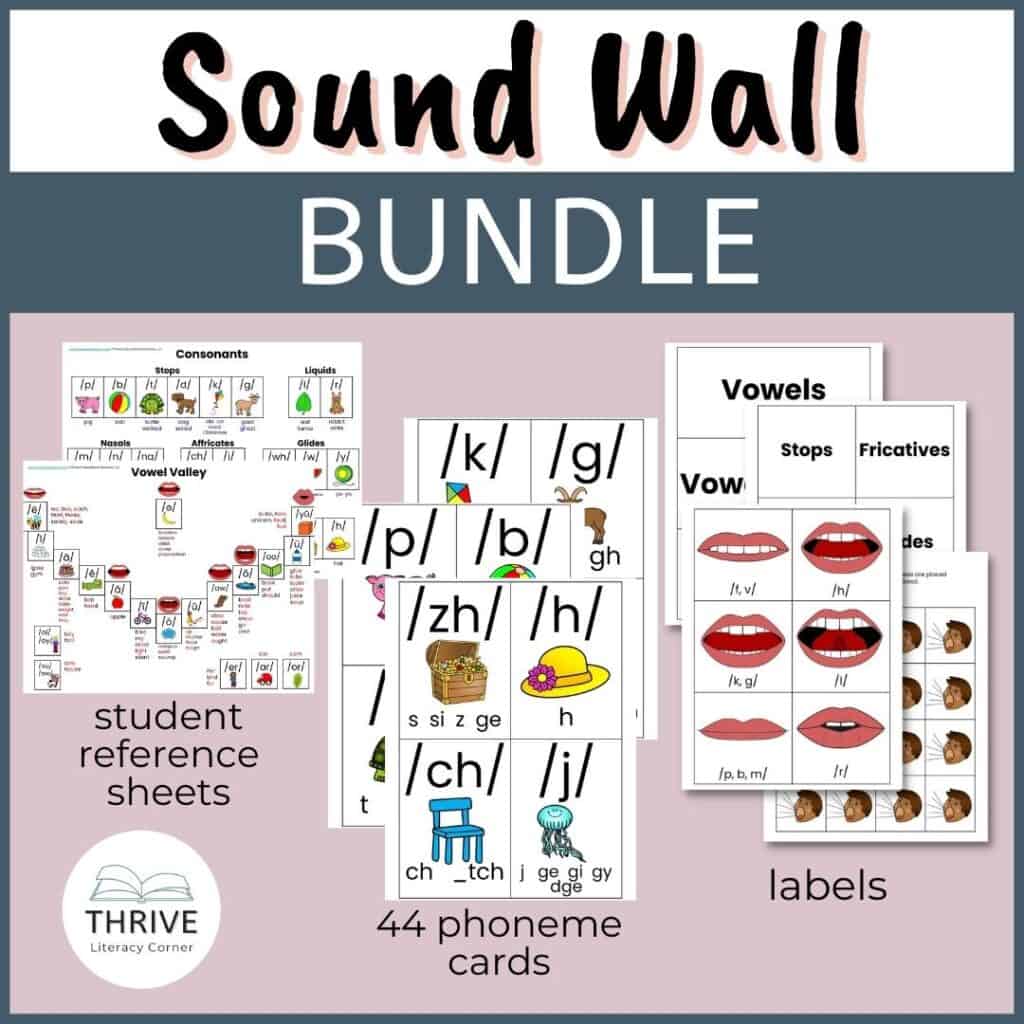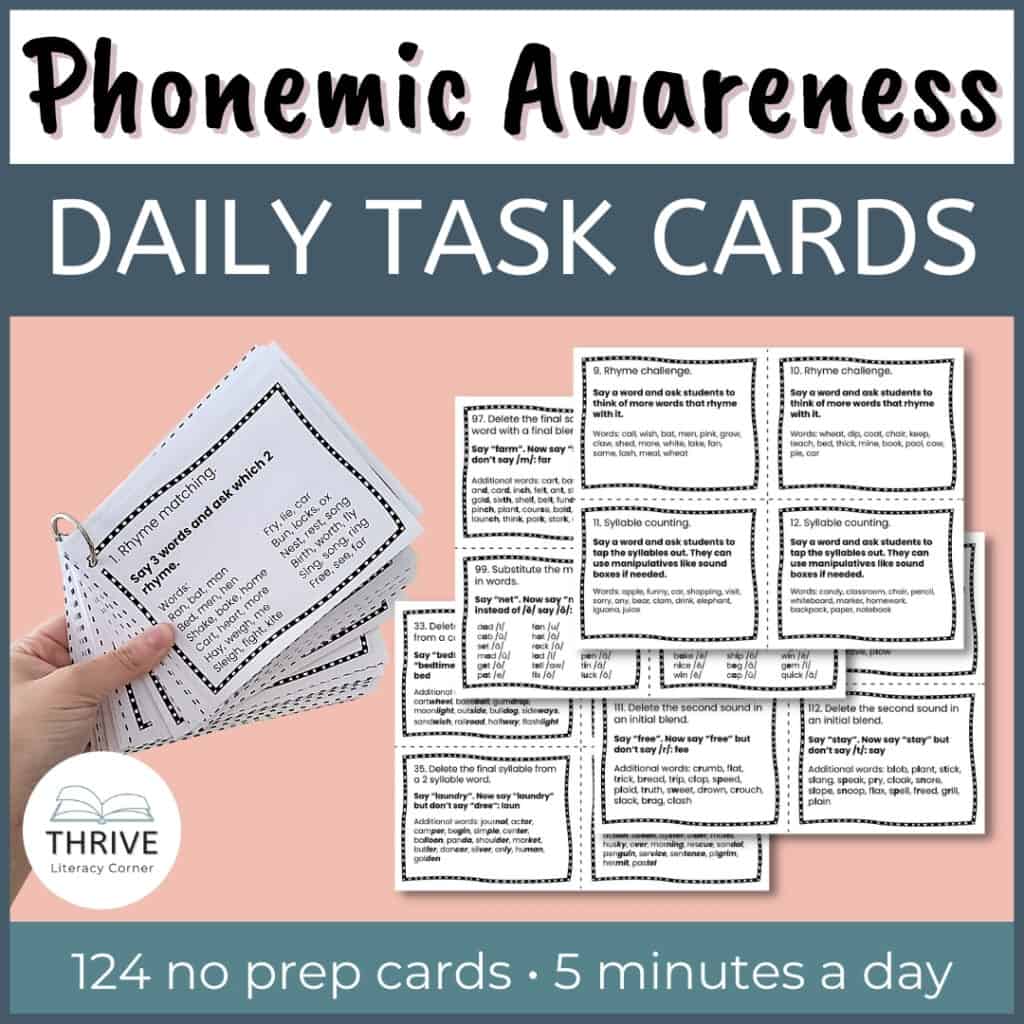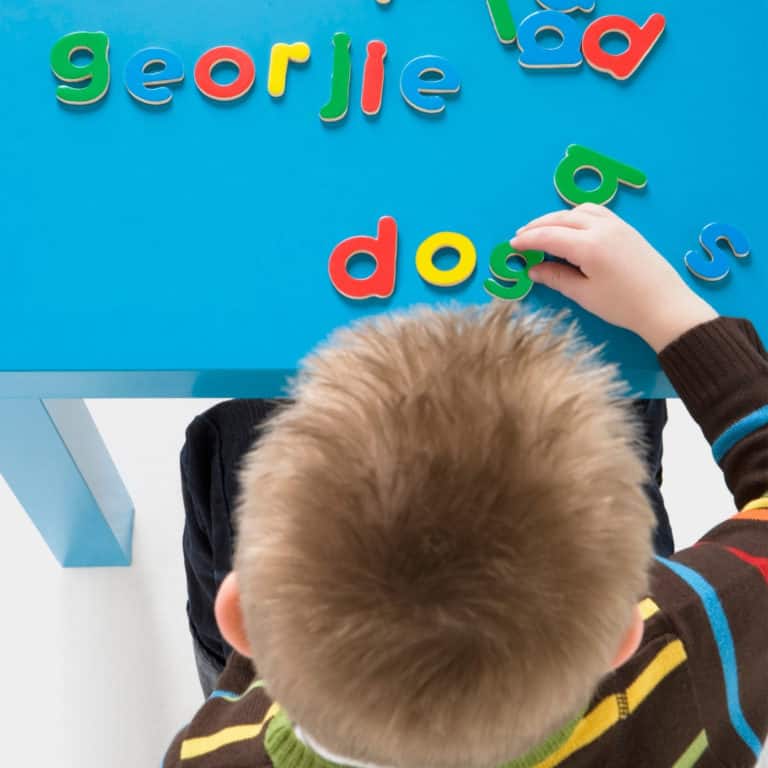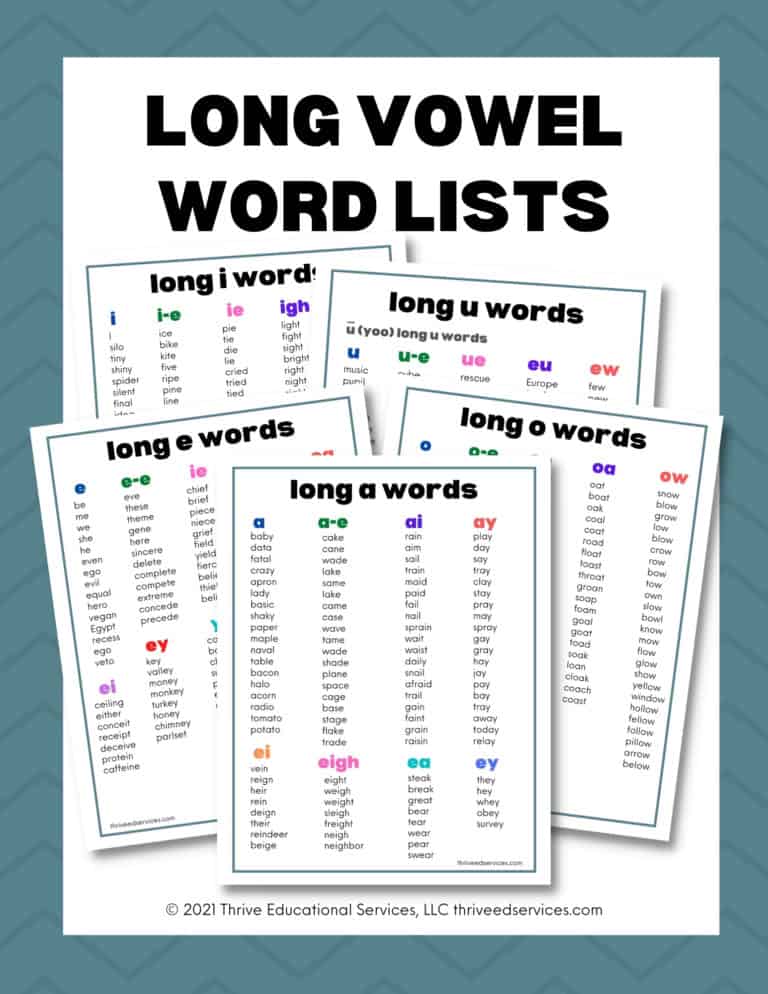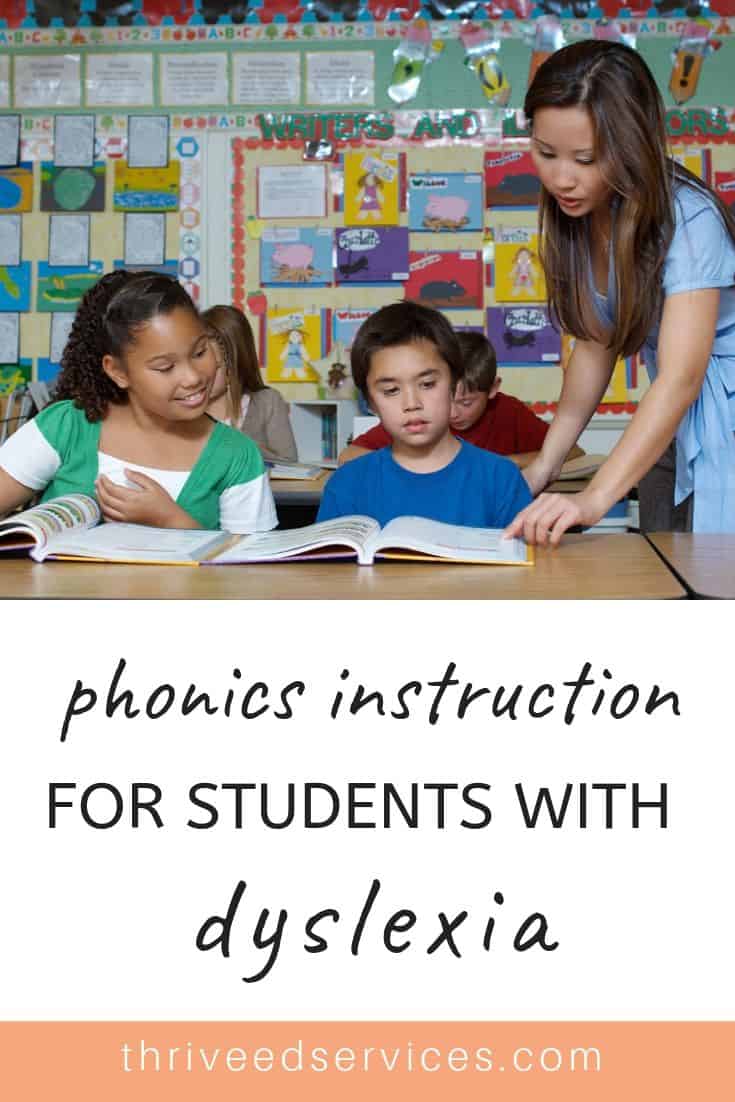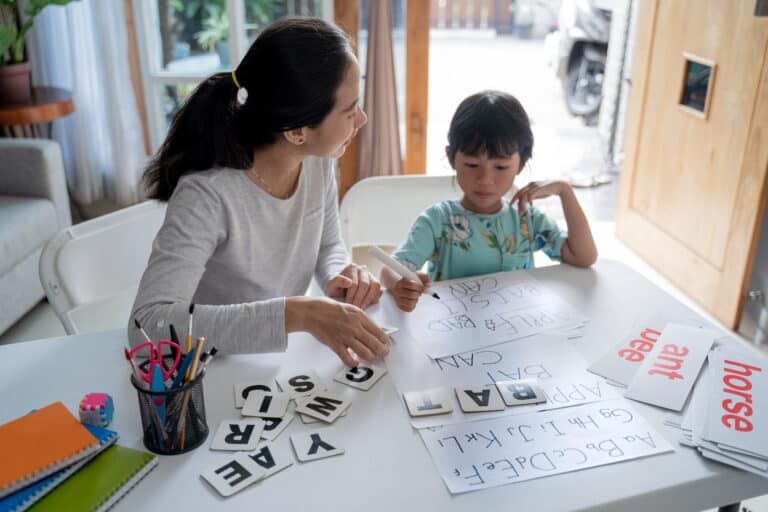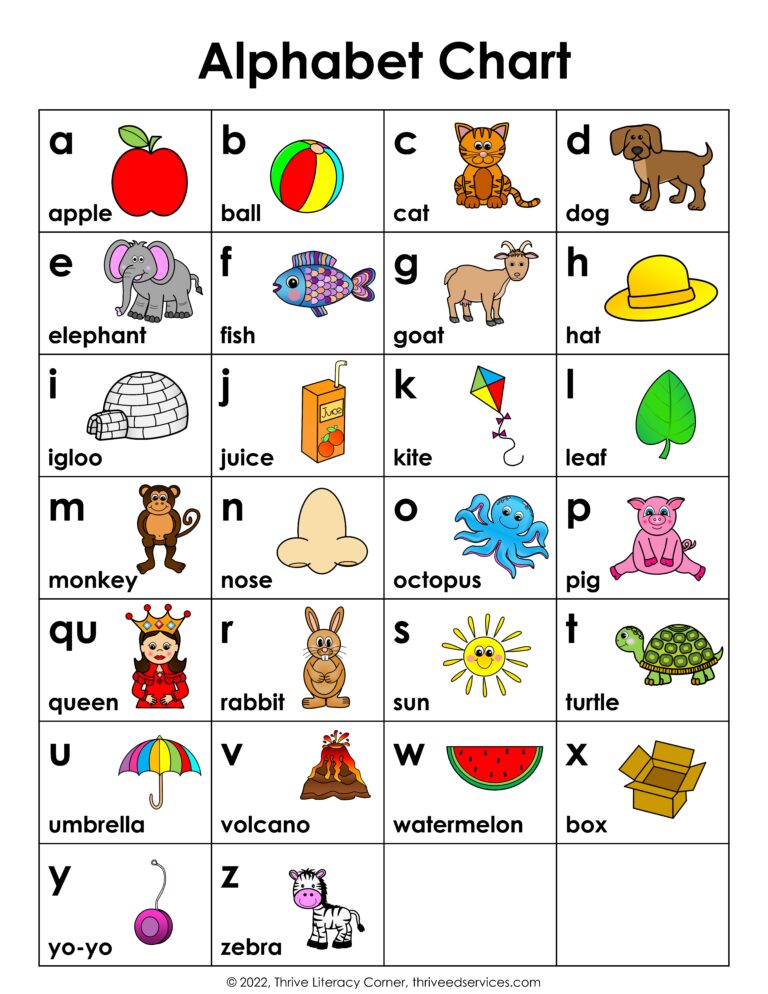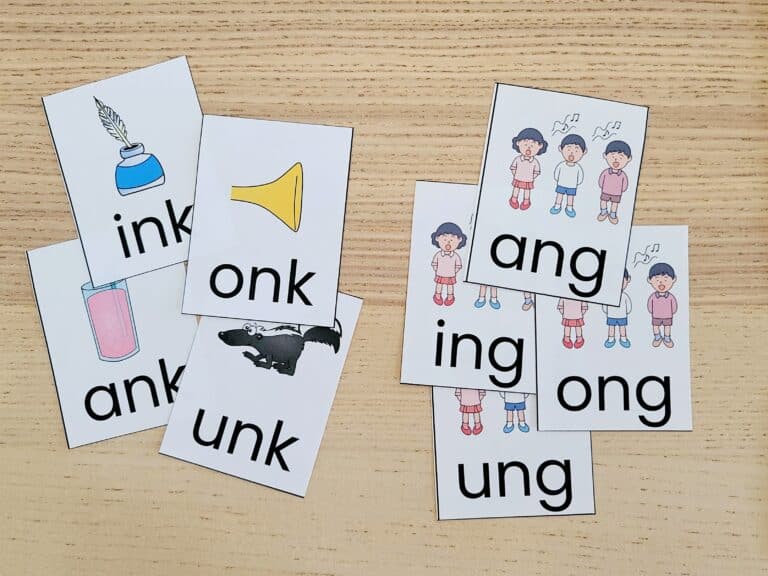How To Teach Graphemes (Phonograms) + FREE Word List!
This post may contain affiliate links, and I will earn a commission if you purchase through these links. Please read the disclosure policy for more details.
If you’ve read a few of my posts then you’ll know I teach graphemes and use phonogram cards all the time! They are such a great tool in phonics lessons and are so versatile and effective.
I am often asked a number of questions on this topic: “What are phonograms? How can I use phonogram cards? What is a grapheme? What’s the difference between phonemes and phonograms and graphemes?”
And sometimes I’ll get: “I don’t understand any of this stuff! HELP!”
So in this post, I’m breaking down graphemes and phonograms, and sharing exactly how to teach them.
What is a grapheme?
A grapheme is a letter or group of letters that represent a sound. They are the letters that spell a sound in a word. Graphemes can be made up of one letter or several letters.
Remember that a sound is called a phoneme. Don’t confuse that with phonics, phonemic, or phonogram. They’re all related but not the same thing. Phonemes are all represented by letters. These are graphemes.
(If you’re super confused about phonemes, phonics, phonological awareness, phonemic awareness, and all that stuff then I recommend you read this guide: Phonics, Phonemic Awareness, and Phonological Awareness: The Ultimate Guide)
There are three types of graphemes:
1. Single letter graphemes, such as p, b, t
2. Digraphs, which are two letters that make one sound, such as ch, sh, th
3. Trigraphs, which are three letters that make one sound, such as igh
Phonogram or grapheme?
They are actually the same thing! Graphemes are also called phonograms, and you’ll notice I use the word phonograms more often throughout my blog only because of my Orton-Gillingham training and the regular use of phonogram cards. But they mean the same thing.
Phono means sound, and graph means written symbol, so you can see how this word makes sense.
Grapheme/Phonogram Examples
T is a one letter grapheme that represents the /t/ sound.
AI is a two letter grapheme, or a vowel digraph, that represents the long a sound.
IGH is a three letter grapheme, or a trigraph, that represents the long i sound.
The word class has 4 graphemes: c – l – a – ss. Each of these graphemes represents one sound in the word: /k/ /l/ /a/ /s/.
Notice how the grapheme for /s/ in class is made up of 2 letters. Even though some graphemes contain multiple letters, they still represent one sound.
There are also some graphemes that represent more than one sound. For example, consider the grapheme ea. This can be a short e (bread), long e (meat), or long a (great)!
Phonograms List
If you want a list of most of the phonograms/graphemes, you can download this list from my freebies library. This list contains 104 graphemes.
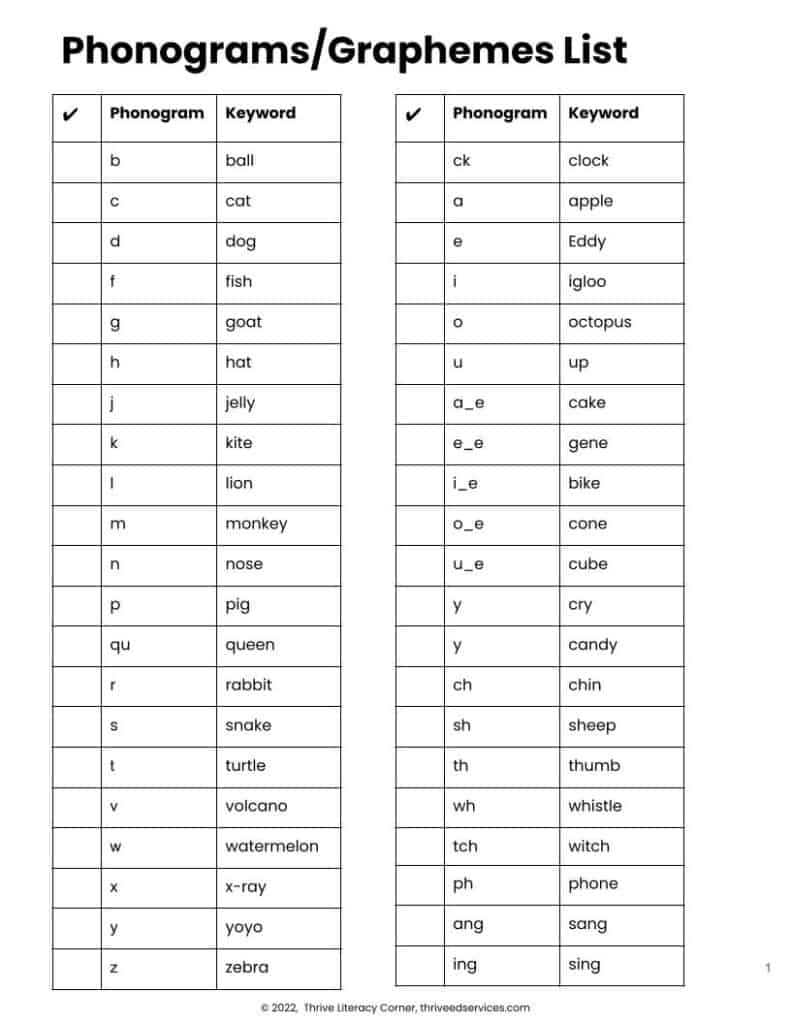
Why should you teach phonograms?
One main reason is that teaching phonograms helps kids learn to read and spell!
Phonograms are the building blocks of reading. They help kids decode words by giving them a specific sound to focus on. Knowing and using phonograms makes reading easier because kids can use their knowledge of sounds to figure out how words are spelled.
Another reason why you should teach phonograms is that they help with spelling. If kids know the different ways to spell a sound, they can use that knowledge when they’re writing. For example, if they want to spell the word night, they can look at all the different ways to spell the /n/ sound (kn, gn, pn, nk) and choose the one that makes the most sense in that word.
How To Teach Phonograms/Graphemes
There are a few different ways that you can teach phonograms. I’ll share a few of my favorite methods below.
Introduce the grapheme
The first step is to introduce the new grapheme. You only introduce a couple of graphemes at a time, and you don’t add more until those are mastered.
For example, you could first introduce S, A, T, and P. Then you would work on these 4 graphemes until they are mastered. This means students will practice blending and segmenting with these graphemes and once they instantly know the sound each represents and can blend and segment with them, you can add in more graphemes.
Do not introduce S, A, T, and P and have students blend words like ‘cat’ and ‘sip’. You only work on the 4 graphemes you taught. When you teach new graphemes, you add those in so they practice the new graphemes with the ones they already know.
Phonogram Cards
One way to teach graphemes is to use phonogram cards. These are also called sound spelling cards and grapheme cards. You can make your own (I have a printable set in my shop) or purchase a ready-made set.
To use them, you would introduce the new grapheme, say the keyword, and spell the sound aloud, all while showing the phonogram card to your students. Your students will repeat this and you would review using this card every day until mastered.
Daily Phonogram Drill
Every day you review by holding up the phonogram cards you have already taught (one at a time) and having your students say the sound, letters, and keyword.
This takes just a few minutes and is done as a drill. You quickly flip through cards as students call out their responses. Keep track of what you are still working on and what has been mastered.
Sound Boxes
Another great way to teach graphemes is through sound boxes. For this method, you’ll need a sound boxes template (I have some free printables in my freebies library).
To start, you’ll introduce a new grapheme and its sound. Then, you’ll put the letter tiles or phonogram cards into the corresponding sound box. Your students will then say the sound of the phonogram and spell it aloud as they put the tiles or cards into the sound box. You could also have students write the letters in the boxes.
You can then review by having your students point to each sound box and say the sound it makes. You can also mix up the order of the tiles/cards and have them put them back in order.
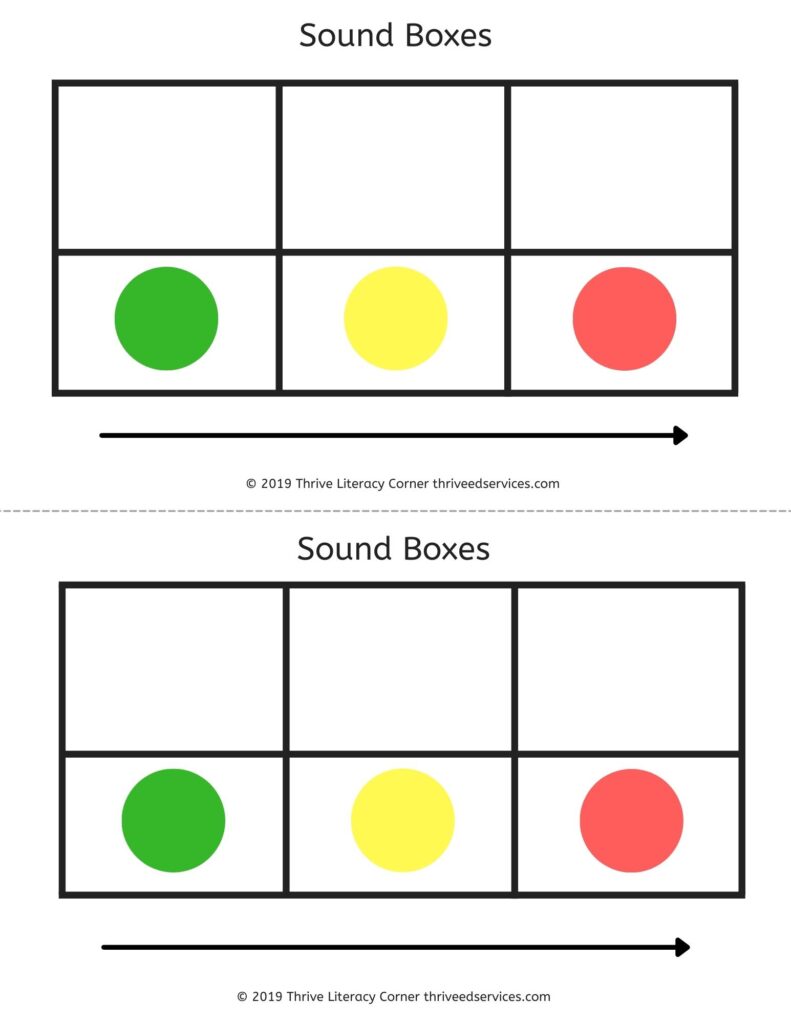
Phoneme Grapheme Mapping
Another way to teach graphemes is by using phoneme grapheme mapping. This method involves sound boxes and writing, so it’s a step above just using sound boxes. Phoneme grapheme mapping is an activity where you segment a word, write the graphemes for each phoneme in boxes, blend and read the word, then write it.
Check out my Word Mapping Template in my shop.
Grapheme Tiles
Grapheme tiles are similar to phonogram cards, but they just contain the letters. They are much better than using letter tiles because they contain the whole grapheme on one tile, instead of just individual letters.
For example, when asking students to spell the word ‘sheets’, they would use 4 tiles: SH, EE, T, S. If they were using letter stiles, the digraphs SH and EE would be split up which doesn’t reinforce learning the grapheme and its sound.
This set is the best I have seen, though it is often out of stock. This is another good option on Amazon.
Blending Drills
You can do blending drills using phonogram cards or grapheme tiles.
With either, you structure it in 2 or more sections/piles. Start off having students blend 2 graphemes, then work up to 3. Spend a few minutes doing this activity each day. And of course, only use graphemes you have explicitly taught.
Dictation
Dictation is a great way to reinforce graphemes since you can ask students to list all the ways to spell a sound. After a lesson, I like to do a quick dictation asking students to write graphemes and words with those graphemes. I pick out a few of the new ones I just taught and a few review graphemes, but never anything I haven’t explicitly taught!
In the dictation sheet picture below, for the sound section, I said a sound aloud and asked students to write all the ways to spell that sound. What they write should reflect the graphemes you have taught. For example, if I ask a child in first grade to list all the graphemes for the long a sound at the beginning of the year, they might only write a, and a_e. Later in the year they would learn ai, and ay and can add those. You can grab this dictation template in my freebies library.
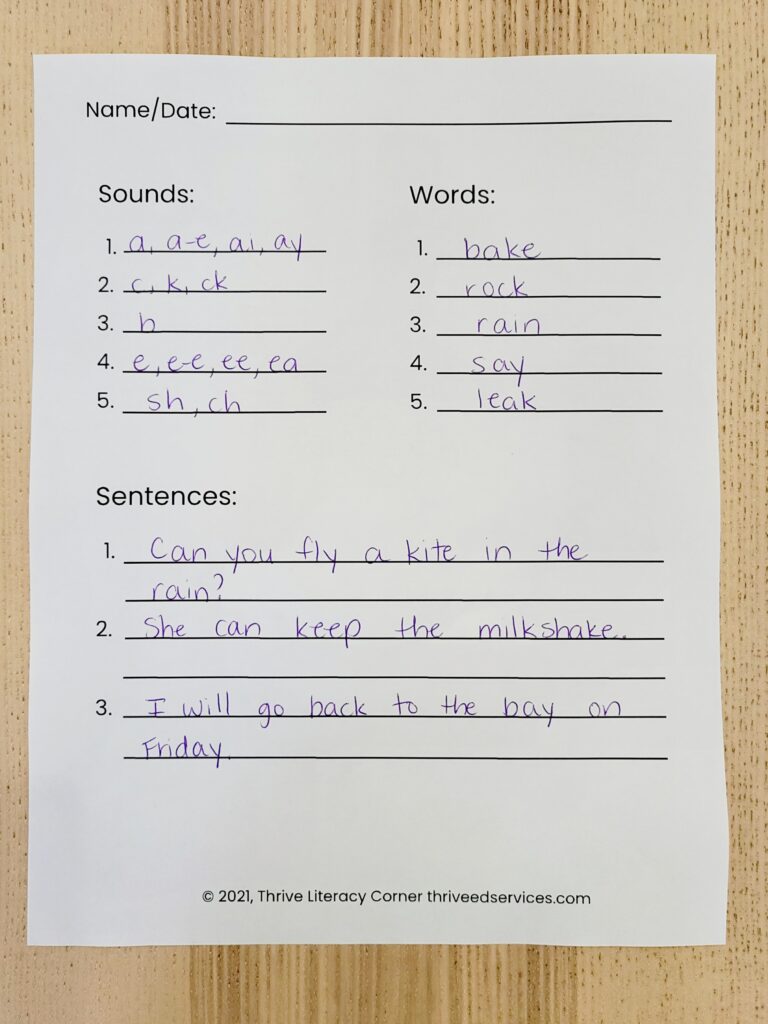
Phonogram Games
Once your students have learned the phonograms, you can reinforce their learning by playing games. There are a lot of great phonogram games out there that are both fun and educational.
I would just take any phonics game or board game and use phonogram cards instead of words.
Bottom Line
Whether you call them graphemes or phonograms doesn’t matter. But they truly are an important part of learning to read and spell! They represent the sounds that letters make in words, and this is the basis of reading and spelling. There are a few different ways to teach phonograms, and all of them are beneficial for kids. Give these methods a try and see your students’ reading and spelling start to improve.
Want to remember this? Save How To Teach Graphemes (Phonograms) to your favorite Pinterest board!
